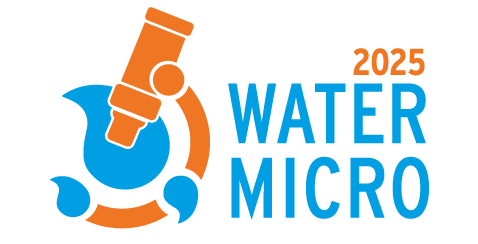Pieter van Veelen, Jippe Silvius, Alicia Borneman, Elfy Ly, Adel Bou Alia, Stijn Teunissen
Wetsus, European Centre of Excellence for Sustainable Water Technology, Leeuwarden, Netherlands
Introduction
Purpose:
- Let water professionals experience accessible microbiome profiling
- Discuss the relevance of a quantitative axis for microbiomes in water monitoring context, and participants will interactively experience this with example data and a focus on pathogenic taxa that can cause water-borne disease
- Participants will conduct microbiome data visualization using a step-by-step precoded Notebook using Google Colab (or alike), which can be reused by participants as blueprint
Relevance:
Microbiomes are not straightforward to look into. Still, microbiomes have become widely acknowledged in science and in society as key indicators of environmental, animal and human health. Digging in the information treasures of microbiomes routinely for tracking water quality can serve as an early warning system for pathogen circulation to the public health domain. Safe and clean water demand turned into a global top priority. This transformation includes leveraging microbiomes in bioprocesses to clean waste(water) streams, and reshaping microbiomes into intervention tools to tackle environmental challenges. To facilitate this further, this Side Event aims to bring microbiomes closer to water professionals by zooming in on water-borne disease pathogens. Participants will experience how to take a look into the water microbiome, and to dive a little deeper by incorporating a quantitative axis.
Side Event’s objective
What are the specific goals you aim to achieve? • Introduce water professionals without microbiome science experience to the process of microbiome profiling, and with that, bring within reach what was once unattainable for non-experts. • Educate water professionals with a certain degree of experience with microbiome data to the next step in accurate microbiome profiling. This includes incorporating normalization for taxon-dependent 16S rRNA gene copy number variation, and demonstrating the value of integrating the quantitative axis of water microbiomes by incorporating quantitative data of microbial biomass (e.g. flow cytometric or quantitative PCR). • Provide an interactive experience though executing a step-by-step recipe of microbiome data processing, visualization (e.g. alpha and beta diversity, abundance barplots, etc.), and collectively insights into microbiome profiles of water. • Provide participants with a reusable blueprint of a microbiome analysis document to apply on own data, applicable to users with no coding experience.
Methodology/format
The structure and format of the H2Omics Side Event:
1. Exploring perspectives and interests of event participants
Using Mentimeter, we will poll the participants’ associations with water microbiomes, their professional interests in measurements of microbiomes, and how participants foresee applying microbiomes such as a chemical-free technology.
2. A topic introduction
We will touch upon various angles at which microbiomes in the water cycle can be valuable assets in the One Health context
3. Layout of the water microbiome roadmap
We will take participants briefly through the process from taking water samples, through sample processing, obtaining sequencing and quantitative data, and set the stage for the H2Omics Side Event’s focus on data handling, visualization and interpretation of microbiomes and pathogenic constituents.
4. Explanation of the interactive microbiome analysis
The conveners will outline in interactive part of the H2Omics Side Event by guiding the participants how to use the notebook.
5. Collective interactive microbiome analysis
Participants individually execute the different steps of analyzing microbiome data using Google Colab (or alike), which will be executed in different steps and results of each step will be briefly discussed plenary:
6. Take home: step-by-step explanation on how to apply the workflow on own data
Expected outcome
- A reusable digital pre-coded (R) notebook for use in R Studio or Google Colab (or alike) to analyse own microbiome data
- A step-by-step practical advice for good practice during sampling, sample handling and preparation, which will be included as part of the notebook
- A refreshing approach that deviated from current practices by integration of quantitative data on microbial biomass in the water system of interest.
